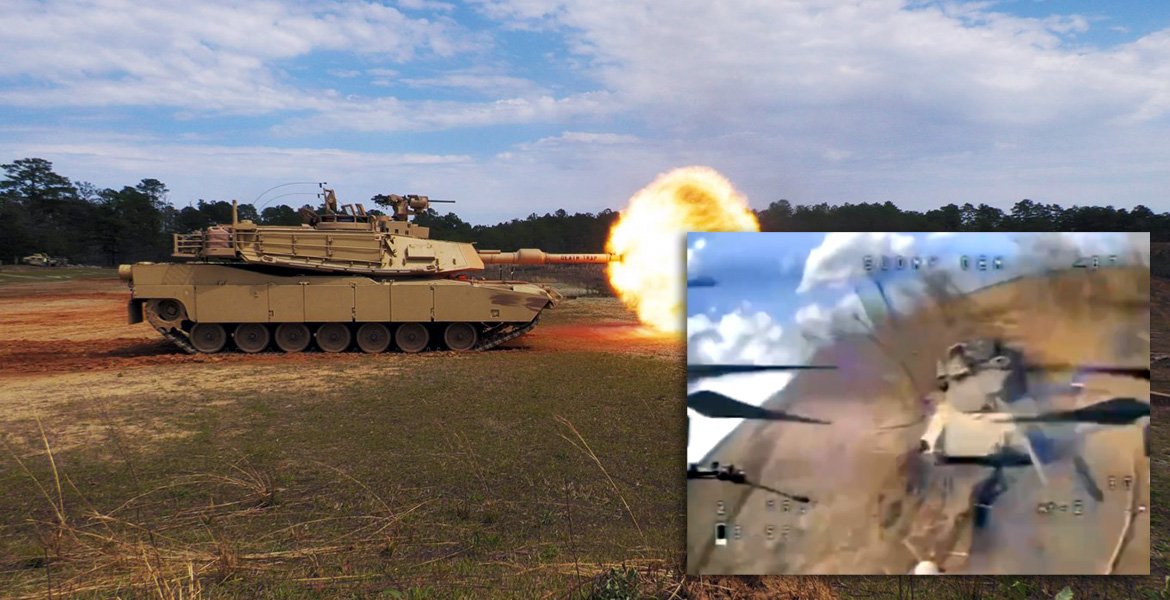The war in Ukraine, now stretching into its third year, has taken a significant toll on one of America’s most iconic military assets: the M1 Abrams tank. Up to 20 of 31 tanks may be destroyed. According to sources, the Abrams tanks were removed from the battlefield.
These advanced battle tanks have encountered a brutal reality on the battlefield. Estimates suggest that between 5 and 20 of the 31 supplied units have been destroyed and several others damaged since their deployment in early 2024.
In late 2023, the United States provided Ukraine with 31 M1A1 Abrams tanks, a move hailed as a game-changer for Kyiv’s forces. Operated primarily by the elite 47th Mechanized Brigade, the tanks saw action in key hotspots like Avdiivka and Kursk. However, their tenure has been marred by a combination of Russian firepower and evolving battlefield tactics, particularly the widespread use of drones.
According to a senior U.S. defense official in April 2024, at least 5 Abrams tanks had been destroyed within months of their arrival, with three more suffering moderate damage.
Russian forces claimed a far higher toll, asserting by August 2024 that up to 20 of the tanks had been knocked out, largely by kamikaze drones and anti-tank missiles like the Kornet.
Independent analysts, such as the open-source intelligence group Oryx, have yet to confirm the upper estimate but acknowledge that losses have been significant, likely exceeding a dozen when accounting for destroyed and repairable units.
Ukrainian tank crews have reported mixed experiences. While praising the Abrams’ firepower and mobility, they’ve criticized its vulnerability to Russia’s pervasive First-Person View (FPV) drones—cheap, agile weapons that have turned Ukraine’s skies into a deadly gauntlet for heavy armor.
“The tank is strong, but it’s not built for this war,” a Ukrainian commander said anonymously. “We need more air cover and better countermeasures, or these machines are just targets.”
The U.S. and Ukrainian militaries have scrambled to adapt. By mid-2024, some Abrams units were retrofitted with steel cages—makeshift armor meant to detonate incoming drones before they could penetrate the tank’s hull. Yet, reports indicate that these measures have had limited success, and several tanks were withdrawn from frontline duties as losses mounted.
The high attrition rate has sparked debate in Washington and beyond about the role of traditional heavy armor in modern conflicts dominated by drones and precision munitions.
“The Abrams was designed to fight Soviet tanks, not swarms of $500 drones,” noted military analyst Sarah Keller of the Center for Strategic Studies. “This war is exposing gaps we didn’t fully anticipate.”
Russia, meanwhile, has seized on the losses as propaganda fodder, with state media showcasing footage of burning Abrams wrecks. “The invincible American tank is a myth,” declared a Kremlin spokesperson in late 2024.
As of early 2025, the exact fate of the Abrams fleet remains murky. Conservative estimates peg the number of destroyed tanks at eight or more, with the actual total possibly approaching 20 if Russian claims hold water. Damaged units add further uncertainty, with repair efforts hampered by logistical challenges and a shortage of spare parts in Ukraine’s war-torn landscape.
For Ukraine, the losses underscore a broader struggle: even with Western aid, the fight against Russia’s relentless onslaught demands constant adaptation.
For the U.S., the Abrams’ battlefield woes may prompt a reckoning about how to equip allies—and itself—for the wars of tomorrow. As one Ukrainian soldier put it, standing beside a scarred Abrams hull, “It’s a beast, but even beasts can fall.”
Sources
- Forbes: Here’s How The Russians Are Taking Out Ukraine’s M-1 Abrams Tanks
- CNN: Soldiers in Ukraine say US-supplied tanks have made them targets for Russian strikes
- National Interest: Ukraine Has A Problem: 20 out of 31 M1 Abrams Tanks Have Been Destroyed
- AP: Ukraine pulls US-provided Abrams tanks from the front lines over Russian drone threats


